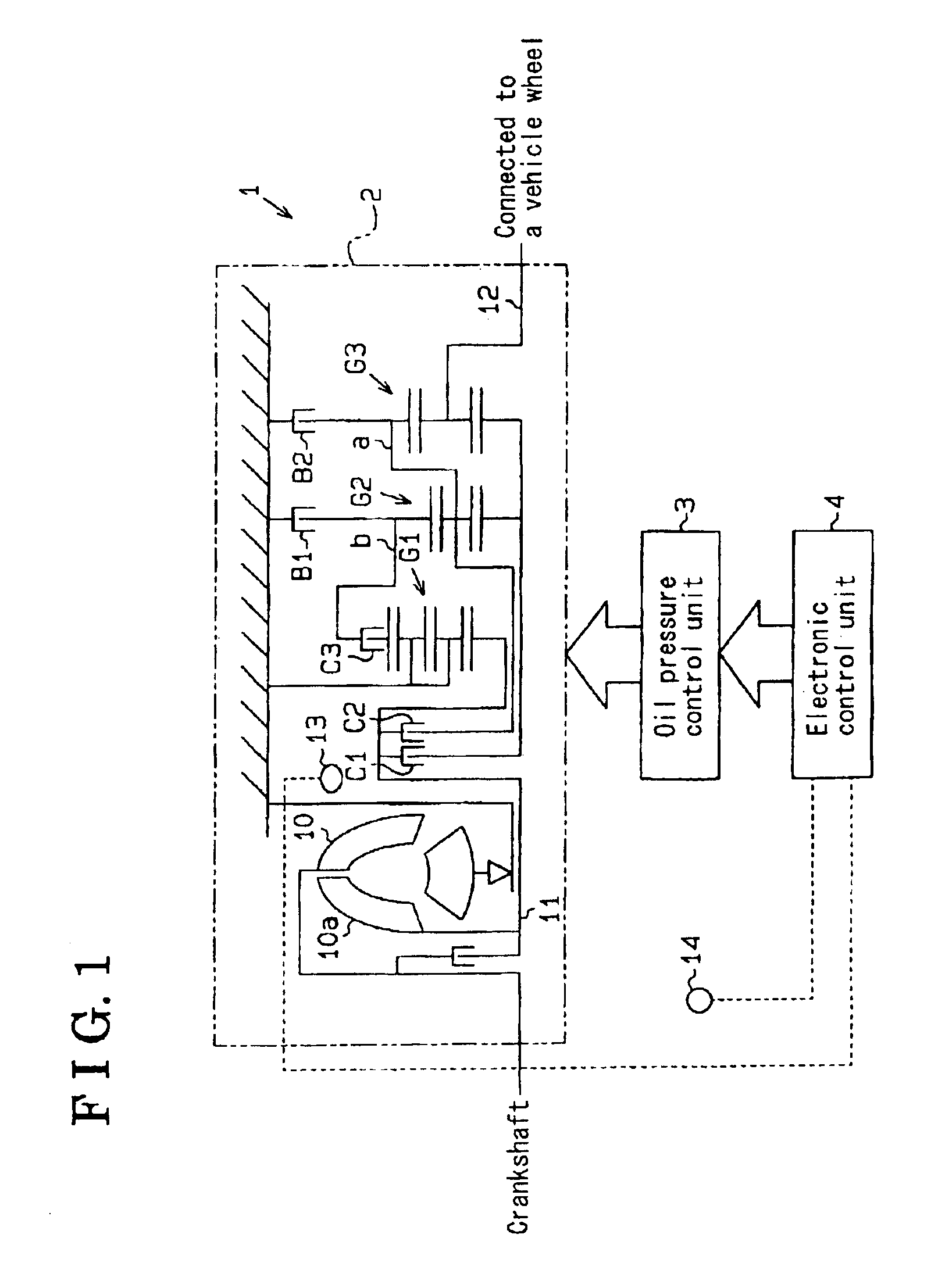Automatic transmission system and method for controlling thereby
a transmission system and automatic technology, applied in the direction of multiple ratio transmission, mechanical equipment, transportation and packaging, etc., can solve the problems of difficulty in comprehending an entire individual, inaccurate calculation or estimation of oil pressure characteristic value of friction engagement elements,
- Summary
- Abstract
- Description
- Claims
- Application Information
AI Technical Summary
Benefits of technology
Problems solved by technology
Method used
Image
Examples
Embodiment Construction
An embodiment of the present invention will be described hereinbelow in detail with reference to the accompanying drawings.
As especially seen in FIG. 1, an automatic transmission system 1 according to the embodiment of the present invention includes an automatic transmission 2, an oil pressure control unit 3, and an electronic control unit 4. The oil pressure control unit 3 and the electronic control unit 4 functions as a control unit.
The automatic transmission 2 is connected to a crankshaft of an engine (not shown) and transmits an engine torque to a vehicle wheel (not shown). The automatic transmission 2 is provided with a torque converter 10, which is connected to the crankshaft, a turbine 10a (i.e. a driving torque transmitting member), which is disposed in the torque converter 10 and is connected to an input shaft 11 of the automatic transmission 2, an output shaft 12, which is connected to the vehicle wheel via a differential gear (not shown), a first single pinion planetary g...
PUM
 Login to View More
Login to View More Abstract
Description
Claims
Application Information
 Login to View More
Login to View More - R&D
- Intellectual Property
- Life Sciences
- Materials
- Tech Scout
- Unparalleled Data Quality
- Higher Quality Content
- 60% Fewer Hallucinations
Browse by: Latest US Patents, China's latest patents, Technical Efficacy Thesaurus, Application Domain, Technology Topic, Popular Technical Reports.
© 2025 PatSnap. All rights reserved.Legal|Privacy policy|Modern Slavery Act Transparency Statement|Sitemap|About US| Contact US: help@patsnap.com



